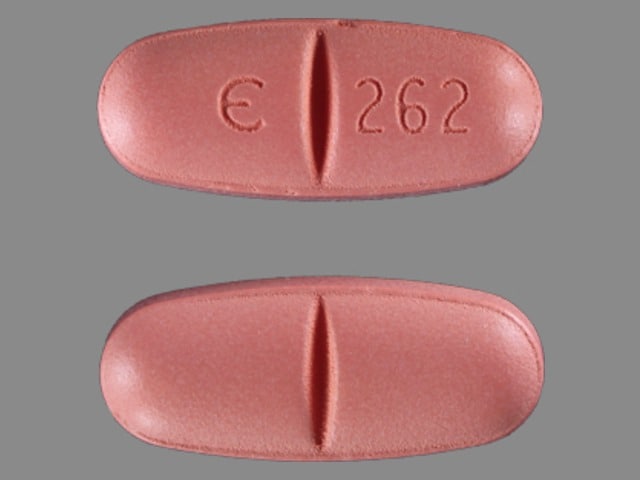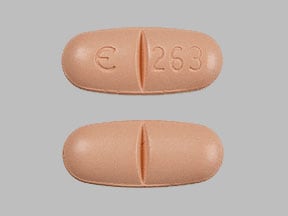What is Banzel?
Banzel is a prescription medicine used with other medicines to treat seizures associated with Lennox-Gastaut Syndrome (LGS) in adults and pediatric patients 1 year of age and older.
It is not known if Banzel is safe and effective in the treatment of Lennox-Gastaut Syndrome in pediatric patients under 1 year of age.
What is the most important information I should know about Banzel?
Do not stop taking Banzel without first talking to your healthcare provider.
Stopping Banzel suddenly can cause serious problems.
Banzel can cause serious side effects, including:
1. Like other antiepileptic drugs, Banzel may cause suicidal thoughts or actions in a very small number of people, about 1 in 500.
Call a healthcare provider right away if you have any of these symptoms, especially if they are new, worse, or worry you:
- thoughts about suicide or dying
- attempt to commit suicide
- new or worse depression
- new or worse anxiety
- feeling agitated or restless
- panic attacks
- trouble sleeping (insomnia)
- new or worse irritability
- acting aggressive, being angry, or violent
- acting on dangerous impulses
- an extreme increase in activity and talking (mania)
- other unusual changes in behavior or mood
- Suicidal thoughts or actions can be caused by things other than medicines. If you have suicidal thoughts or actions, your healthcare provider may check for other causes.
How can I watch for early symptoms of suicidal thoughts and actions?
- Pay attention to any changes, especially sudden changes, in mood, behaviors, thoughts, or feelings.
- Keep all follow-up visits with your healthcare provider as scheduled.
Call your healthcare provider between visits as needed, especially if you are worried about symptoms.
Do not stop Banzel without first talking to a healthcare provider.
- Stopping Banzel suddenly can cause serious problems. Stopping a seizure medicine suddenly in a patient who has epilepsy can cause seizures that will not stop (status epilepticus).
2. Banzel may cause you to feel sleepy, tired, weak, dizzy, or have problems with coordination and walking.
Who should not take Banzel?
Do not take Banzel if you have a genetic condition called familial short QT syndrome, a problem that affects the electrical system of the heart.
What should I tell my healthcare provider before taking Banzel?
Before you take Banzel, tell your healthcare provider if you:
- have heart problems
- have liver problems
- have any other medical problems
- have or have had suicidal thoughts or actions, depression or mood problems
- are pregnant or plan to become pregnant. It is not known if Banzel can harm your unborn baby. Tell your healthcare provider right away if you become pregnant while taking Banzel. You and your healthcare provider will decide if you should take Banzel while you are pregnant.
- Banzel may make certain types of birth control less effective. Talk to your healthcare provider about the best birth control methods for you while you take Banzel.
- If you become pregnant while taking Banzel, talk to your healthcare provider about registering with the North American Antiepileptic Drug Pregnancy Registry. You can enroll in this registry by calling 1-888-233-2334. The purpose of this registry is to collect information about the safety of antiepileptic medicines during pregnancy.
- are breastfeeding or plan to breastfeed. It is not known if Banzel will pass into your breast milk. Talk to your healthcare provider about the best way to feed your baby if you take Banzel.
Tell your healthcare provider about all the medicines you take, including prescription and non-prescription medicines, vitamins, and herbal supplements.
Taking Banzel with certain other medicines can cause side effects or affect how well they work. Do not start or stop other medicines without talking to your healthcare provider.
Know the medicines you take. Keep a list of them and show it to your healthcare provider and pharmacist each time you get a new medicine.
How should I take Banzel?
- Take Banzel exactly as your healthcare provider tells you. Your healthcare provider will tell you how much Banzel to take.
- Your healthcare provider may change your dose. Do not change your dose of Banzel without talking to your healthcare provider.
- Take Banzel with food.
- Banzel tablets can be swallowed whole, cut in half or crushed.
- If you take Banzel Oral Suspension instead of Banzel tablets, shake the bottle well before you take each dose. Measure your dose of Banzel Oral Suspension using the bottle adapter and dosing syringes provided.
See the complete Instructions for Use that come with Banzel for information on how to use the dosing syringes and measure your dose of Banzel Oral Suspension. - If you take too much Banzel, call your local Poison Control Center or get emergency medical help right away.
What should I avoid while taking Banzel?
- Do not drink alcohol or take other medicines that make you sleepy or dizzy while taking Banzel until you talk to your healthcare provider. Banzel taken with alcohol or medicines that cause sleepiness or dizziness may make your sleepiness or dizziness worse.
- Do not drive, operate heavy machinery, or do other dangerous activities until you know how Banzel affects you. Banzel can slow your thinking and motor skills.
What are the possible side effects of Banzel?
See “What is the most important information I should know about Banzel?”
Banzel may cause serious side effects including:
- Banzel can also cause allergic reactions or serious problems which may affect organs and other parts of your body like the liver or blood cells. You may or may not have a rash with these types of reactions.
Call your healthcare provider right away if you have any of the following. Symptoms may include:
- swelling of your face, eyes, lips, or tongue
- trouble swallowing or breathing
- a skin rash
- hives
- fever, swollen glands, or sore throat that do not go away or come and go
- swollen glands
- yellowing of your skin or eyes
- dark urine
- unusual bruising or bleeding
- severe fatigue or weakness
- severe muscle pain
- your seizures happen more often or become worse
Call your healthcare provider right away if you have any of the symptoms listed above.
The most common side effects of Banzel include:
- headache
- dizziness
- tiredness
- sleepiness
- nausea
- vomiting
Tell your healthcare provider about any side effect that bothers you or that does not go away. These are not all of the possible side effects of Banzel. For more information, ask your healthcare provider or pharmacist.
Call your doctor for medical advice about side effects. You may report side effects to FDA at 1-800-FDA-1088.
Banzel Images
General information about the safe and effective use of Banzel
Medicines are sometimes prescribed for purposes other than those listed in a Medication Guide. Do not use Banzel for a condition for which it was not prescribed. Do not give Banzel to other people, even if they have the same symptoms that you have. It may harm them.
This Medication Guide summarizes the most important information about Banzel. If you would like more information, talk with your doctor. You can ask your pharmacist or doctor for information about Banzel that is written for health professionals.
For more information, go to www.banzel.com or call 1-888-274-2378.
How should I store Banzel?
Store Banzel tablets and oral suspension at 59ºF to 86ºF (15ºC to 30ºC).
Tablets
- Keep Banzel tablets in a dry place.
Oral Suspension
- Replace the cap securely after opening.
- Keep Banzel Oral Suspension in an upright position.
- Use Banzel Oral Suspension within 90 days of first opening the bottle.
Keep Banzel and all medicines out of the reach of children.
What are the ingredients in Banzel?
Active ingredient: rufinamide
Tablets Inactive ingredients: colloidal silicon dioxide, corn starch crosscarmellose sodium, hypromellose, lactose monohydrate, magnesium stearate, microcrystalline cellulose, and sodium lauryl sulphate, iron oxide red, polyethylene glycol, talc, and titanium dioxide.
Oral suspension Inactive ingredients: microcrystalline cellulose and carboxymethylcellulose sodium, hydroxyethylcellulose, anhydrous citric acid, simethicone emulsion 30%, poloxamer 188, methylparaben, propylparaben, propylene glycol, potassium sorbate, noncrystallizing sorbitol solution 70%, orange flavor.
The oral suspension does not contain lactose or gluten and is dye-free. The oral suspension does contain carbohydrates.






